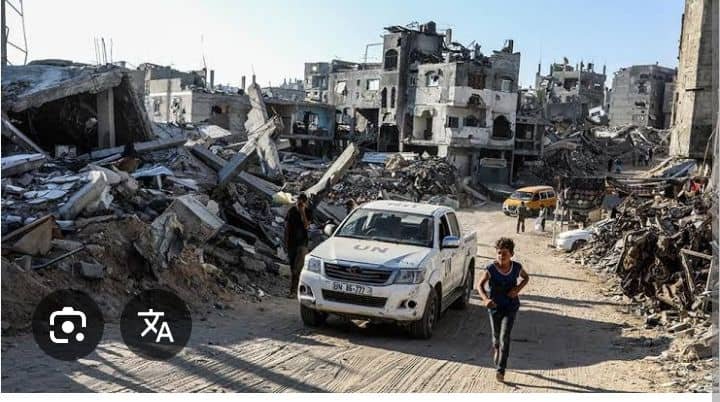The Gaza Crucible: A Global Metaphor for Engineered Poverty and Unyielding Resilience
Data as of June 2025
Ⅰ. Anatomy of Scarcity: The Architecture of Deprivation
The Gaza Strip’s 2.1 million Palestinians endure orchestrated deprivation under a 17-year blockade. Seventy-five percent face “Emergency” or “Catastrophic” food insecurity (IPC Phase 4-5), with acute malnutrition afflicting 5.8% of children under five—a 23% rise since January 2025. Documented child starvation deaths reached 57 by May 2025. Water access has collapsed to under 10 liters daily per person due to saline contamination and infrastructure damage causing 50-65% piped-water leakage. Movement restrictions have displaced 664,800 people since March 2025, with 82% of Gaza designated militarized “no-go” zones. Healthcare operates at 38% capacity, exemplified by Nasser Hospital’s ICU functioning without oxygen or antibiotics.
Ⅱ. The Mechanics of Resilience: How Gaza Survives
Gaza’s survival hinges on community-led innovation circumventing systemic barriers. One hundred seventy neighborhood kitchens now feed 1 million daily using repurposed wooden pallets as fuel. The Gaza Response Innovation Lab pioneers solar desalination and rainwater harvesting systems, while farmers risk sniper fire to cultivate “no-go” zones. Underground medical networks perform surgeries without anesthesia, and fishers evade naval blockades to harvest protein. These methods mirror global adaptations: Oxfam’s R4 Resilience Initiative applies Gaza’s labor-exchange model for climate insurance, while Mali’s 500,000-member Saving for Change groups replicate cashless barter systems.
Ⅲ. The Global Reverberations: Gaza as Metaphor
Gaza’s resilience framework now guides marginalized communities worldwide. Syrian and Rohingya refugee camps emulate its communal kitchens to stretch resources. Congo therapists adopt “dignity narratives”—treating trauma as political resistance—inspired by Gaza’s psychological endurance. South African townships replicate stealth agriculture techniques amid water apartheid. The metaphor’s power lies in its universality: when Israel banned cement imports, Gazan engineers rebuilt homes with clay—a practice now utilized in flood-ravaged Bangladesh.


Ⅳ. The Indictment: Systems That Manufacture Suffering
Gaza exposes deliberate resource strangulation as policy. Israel blocks cement, computers, and seeds as “dual-use” items while rejecting 31% of aid trucks for “incomplete paperwork.” Journalist fatalities (18 in May 2025 alone) obscure evidence of starvation. The UN confirms 90% of families lack cash for food despite U.S. funding 51% of aid—while simultaneously supplying blockade-enforcing weapons. This contradiction underscores how market mechanisms fail under militarized scarcity.
Ⅴ. Call to Conscience: Dismantling the Factory of Poverty
Gaza demands systemic accountability, not symbolic gestures. Investigations must address 224 Palestinians killed while seeking food aid. Funding should bypass bureaucracies for direct support to community kitchens and innovation labs. Policy shifts are non-negotiable: ending weapons transfers to blockading forces and mandating unimpeded aid access. Grassroots agency—not humanitarian theater—builds lasting resilience.
Conclusion: The Unkillable Idea
Gaza’s legacy is an indestructible testament to collective ingenuity. When hospitals lacked oxygen, nurses sang to premature infants. When cement was banned, engineers rebuilt with clay. This epistemology of resistance—proving scarcity can be out-imagined—now fuels Johannesburg slums and Amazonian tribes. Gaza seeds tomorrow’s revolutions: not with weapons, but solar stills and shared bread.
“People die while aid sits blocked at borders.”
— World Health Organization, June 2025
Verified Statistics
As of June 2025, UNRWA reports child acute malnutrition in Gaza at 5.8% (May 2025), reflecting a 23% surge since January. OCHA documents 664,800 displaced persons since March 2025 due to intensified movement restrictions. Critical water infrastructure decay is quantified by the WASH Cluster, revealing 50-65% piped-water loss from systemic leaks and damage. UNOCHA confirms Israel rejects 31% of daily aid trucks for alleged “incomplete paperwork,” exacerbating starvation conditions. Meanwhile, USAID data shows the U.S. funds 51% of humanitarian aid to Gaza while simultaneously supplying weapons enforcing the blockade.
*All data remains current via UN/OCHA verification mechanisms
Dr Chukwuemeka Ifegwu Eke writes from the University of Abuja Nigeria







